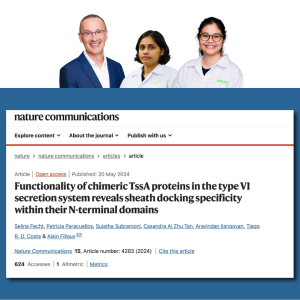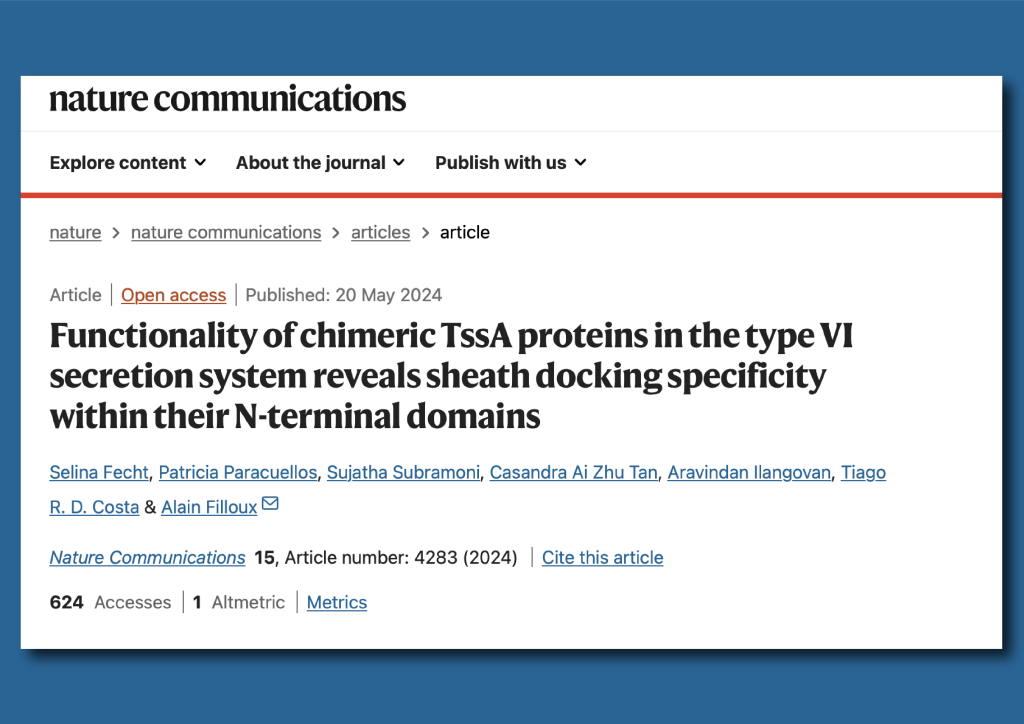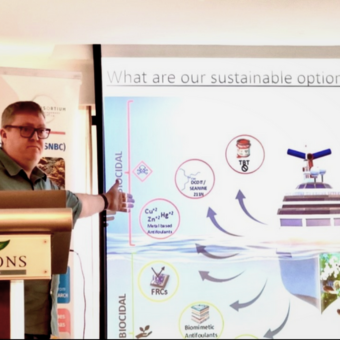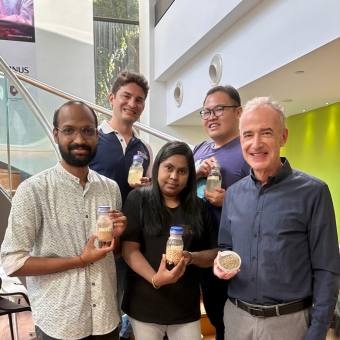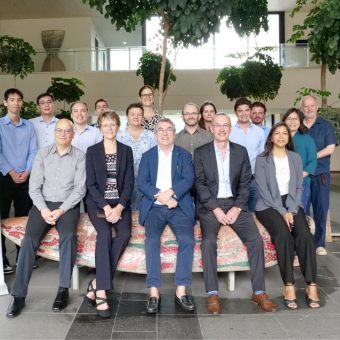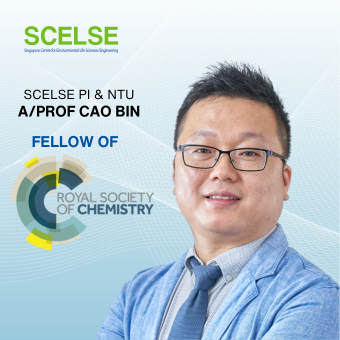- Featured
- 23 Jun 2024
Congrats Prof Alain Filloux, SCELSE’s centre director & team, on the publication of the paper – Functionality of chimeric TssA proteins in the type VI secretion system reveals sheath docking specificity within their N-terminal domains – in Nature Communications. This project was initiated in collaboration with Imperial College London, with Prof Alain Filloux’s former PhD student, Selina Fecht.
This latest paper sheds light on the molecular mechanisms of Pseudomonas aeruginosa, a bacterial pathogen responsible for acute and chronic infections worldwide. P. aeruginosa infections result in high morbidity and mortality, affecting millions globally, particularly those with compromised immune systems. In Singapore, P. aeruginosa is a significant cause of hospital-acquired infections, contributing to severe complications and increasing healthcare burdens.
Prof Filloux and his team investigated the type VI secretion system (T6SS) – a nanomachine likened to a crossbow – which P. aeruginosa, and numerous Gram-negative bacteria, uses to deliver toxic bullets to both bacteria and host cells. These toxic bullets can disrupt the protective resident microbiota and cause significant physiological impact on host health.
The research reveals that subtle mechanistic changes in T6SS function depend on the variability of one of its 13 components, a protein called TssA. This intriguing protein provides specificity and fine-tuning in T6SS assembly and firing. The team discovered that differences in the C terminal portion of TssA form rings of varying sizes and structures, resulting in changes in the speed and strength of the T6SS. Additionally, tiny differences in the N terminal domain specifically drive TssA into the cognate machine, ensuring the proper elongation of the contractile sheath.
Breakthrough Potential: This nuanced understanding of TssA’s role in T6SS function highlights its ecological significance in a broad microbial communities concept, and opens new pathways for developing targeted medications and innovative biotechnologies to combat P. aeruginosa and other bacterial pathogens. By exploiting the unique mechanisms of the T6SS, future therapies could be designed to inhibit its function, thereby reducing the pathogen’s to spread into the host and enhancing treatment efficacy.

Congrats to the team: (L-R): Prof Alain Filloux (SCELSE centre director), Dr Sujatha Subramoni (SCELSE senior research fellow), Dr Casandra Tan (SCELSE research fellow) and (not in pic) Selina Fecht (Imperial College London)


